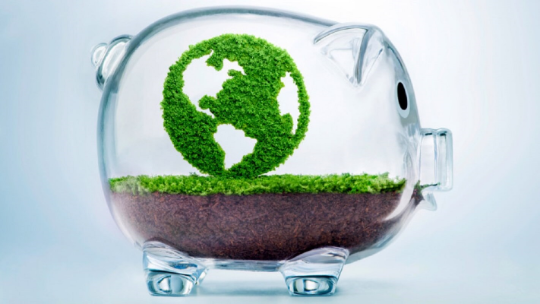Delivery of climate finance will be the key to COP26
Saleemul Huq | 29 July 2021
The upcoming 26th Conference of Parties (COP26) of the United Nations Framework Convention on Climate Change (UNFCCC) is to be held in Glasgow, Scotland in November, with the United Kingdom as the host. The incoming COP26 President designate Alok Sharma has rightly said that the delivery of the "totemic 100 billion US Dollar" in climate finance from developed countries to developing ones to tackle climate change is going to be the key to whether COP26 succeeds or fails.
As with most things, the devil is always in the details. The first thing to note about the USD 100 billion figure is that it was first offered in COP16 in Copenhagen, Denmark back in 2010 by then US Secretary of State Hillary Clinton on behalf of all developed countries. It was again pledged at COP21 in Paris in 2015 and became enshrined as part of the Paris Agreement—a promise from the rich countries to provide USD 100 billion every year from 2020 onwards to help poorer countries tackle climate change, through both mitigation as well as adaptation activities.
However, the year 2020 has already come and gone but this amount was certainly not delivered. It is quite difficult to know how much was really delivered, as no one has the responsibility for keeping count.
The nearest to an official account is from the Organisation for Economic Cooperation and Development (OECD), comprised of Western donor countries, who collect and report data on Overseas Development Assistance (ODA). They have recently added two "Rio Markers" to their list of ODA related items for climate change, one for mitigation and one for adaptation. According to the OECD, the total amount of climate finance was nearly USD 80 billion, which is well short of USD 100 billion.
However, the figures reported by the OECD are based entirely on what each developed country tells them has been spent on climate change and there is no scrutiny of these figures by the OECD itself. An independent evaluation of the thousands of projects in their database by Oxfam found that only USD 20 billion out of the USD 80 billion could be reliably counted as climate finance, which is different from ODA. Hence, the majority of the USD 80 billion claimed to have been given for climate change was, in fact, double counted as development assistance as well as climate change finance. This was clearly contrary to the agreement that climate finance would be new and additional to development finance.
A second detail of this climate finance promise was the demand by the developing countries that at least 50 percent of it should go to the most vulnerable developing countries to support adaptation in the most vulnerable communities there. It has proven very difficult to even track this, as information on where the money went has been very non-transparent. Nevertheless, analysis of available figures by researchers at the International Institute for Environment and Development (IIED) traced these amounts and found that only 20 percent went for adaptation, while 80 percent went for mitigation.
An even worse finding was that, of the amount delivered for adaptation in the vulnerable developing countries, only 10 percent of that actually reached the most vulnerable communities in those countries. Hence, the developed countries have a very big hill to climb if they wish to regain any of their lost credibility going into COP26 in November.
The main issue is not so much the amounts delivered, as even USD 100 billion is a trivial amount compared to actual needs. Rather, it is a question of whether developed countries can be deemed to be negotiating in good faith or bad. If it is the latter, then there is simply no point in going to Glasgow in November, only for the vulnerable developing countries to be given another round of empty promises. The onus is on the developed countries to actually deliver, not just promise again, the USD 100 billion that was due for 2020 and another USD 100 billion that is now also due for 2021.
In fact, the Climate Vulnerable Forum (CVF) countries at their recent Climate Finance Summit demanded that the developed countries provide details of how they plan to deliver the USD 500 billion over the next five years that they had previously pledged.
An important point to clarify on this issue is that decisions on providing finance are not the domain of the environment ministers who will be attending the COP, but of finance ministers who control the purse-strings of nations and who meet at the annual G7 and G20 leaders' meetings every year. The G7 finance ministers met in the UK in June and failed to deliver enough, and the G20 finance ministers met in Italy in July and also failed to deliver. If the finance ministers of the developed countries fail to deliver the full USD 100 billion before COP26, then it would hardly be worth going to Glasgow for the vulnerable developing countries.
So even though the COP26 President designate Alok Sharma has admitted this is a make or break issue for the success of COP26, he needs the Chancellor of the Exchequer of the UK, Rishi Sunak, to deliver the money, which he has not done. In fact, the Chancellor has actually cut the development assistance budget of the UK instead.
So going into COP26, the UK government under Prime Minister Boris Johnson has a steep hill to climb if they are to keep their word. They have only a few months to deliver the money to regain any semblance of credibility.
Dr Saleemul Huq is Director of the International Centre for Climate Change and Development at the Independent University, Bangladesh.
This article was originally published on The Daily Star.
Views in this article are author’s own and do not necessarily reflect CGS policy.
